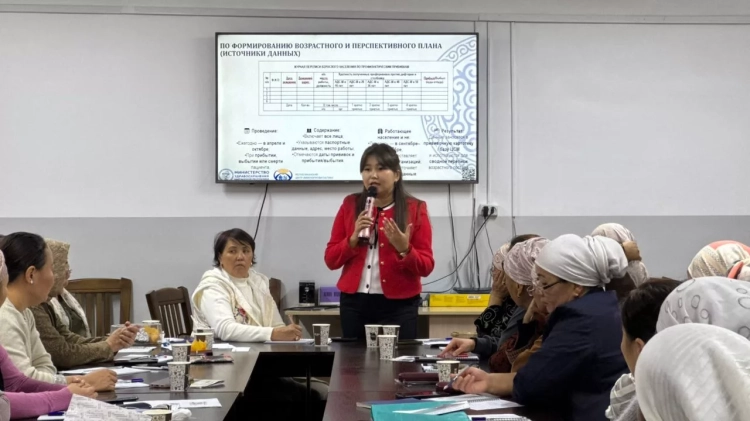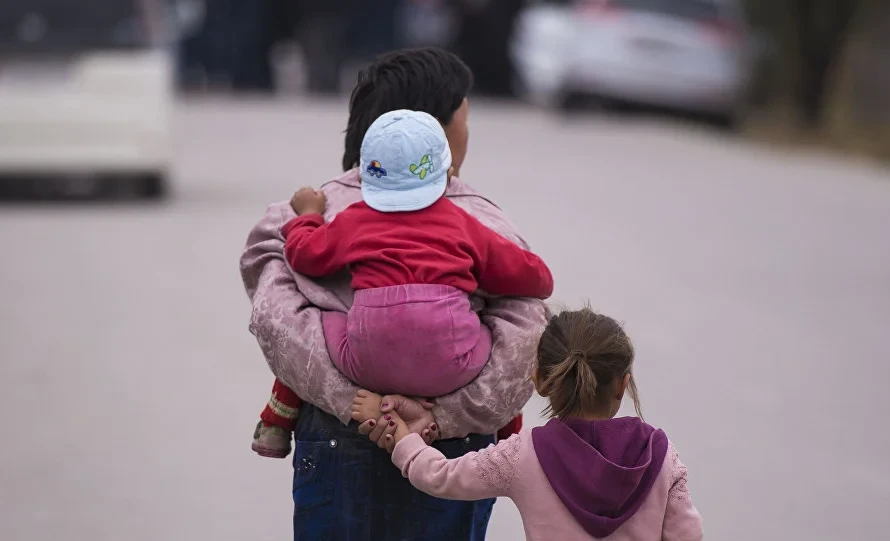
In the photo: Kyrgyz nurse Zamira Omorova cares for newborns in a maternity hospital in Kara-Balta...
The regional board in Talas, attended by the leadership of the presidential representative office,...

From March 24 to 26, 2015, festivals of kindergartens on jailoo were held in the Kara-Kulja, Alay,...
In Uzbekistan, the first large-scale study of the human genome in the country's history has...
In 2024, 1 million 674 thousand 85 vehicles were registered in Kyrgyzstan, among which 83% (1...

As part of the training, healthcare workers will gain knowledge on how to effectively catch up on...

Charity exhibition-fair of handmade products dedicated to Children's Day....

A magical performance for children featuring long-awaited New Year characters! Art Loft VMeste and...
The Cabinet of Ministers has introduced new regulations aimed at optimizing the work of...

During the first nine months of this year, 4,843 minors were identified in Kyrgyzstan as being in...

Kudayarov Duyshе Kudayarovich (1939), Doctor of Medical Sciences (1981), Professor (1984),...

In Uzbekistan, scientists from the Center for Advanced Technologies conducted a unique study of...

At altitudes of 1500-2500 m above sea level, there may be slight functional changes in well-being,...

Children's Camp in Besh-Kunge The main objective of the camp is to create optimal conditions...

Bakasov Stalbek Sabdrakunovich (1950), Doctor of Medical Sciences (1995), Professor (1996)....

Kolodin Anatoly Vasilyevich (1931), Doctor of Medical Sciences (1991) Russian. Born in the city of...

In the first nine months of 2025, 4,843 children were identified in difficult conditions in...

According to Gallup, in 2024, the level of anxiety among the adult population reached record...

According to the draft, amendments to the Constitution are proposed to introduce the death penalty...

Kyrgyzstan is experiencing a rapid increase in population. This was stated by specialists from the...

Students of the International University "Atatürk-Alatoo" have published a manual titled...

Since 1998, the reduction in the number of preschool institutions has been halted, and a...

Population of Kyrgyzstan Thanks to the fundamental changes that occurred in Kyrgyzstan after the...

A study has shown that older women who walked at least 4,000 steps one to two days a week had a...

In Uzbekistan, scientists from the Center for Advanced Technologies have conducted a comprehensive...

Do officials really perceive children as machines? In schools of Kyrgyzstan, the autumn break will...

The countless sufferings brought by the fascist invaders to children in the occupied territories...

BOGOMOLETS Natalia Valeryevna...

The structure of education in Kyrgyzstan encompasses eight official levels, approved by the Law of...

The territory of the republic has discovered deposits of coal, gas, and oil. Among them, coal...

Today, March 22, an official opening of two rooms took place at the Lenin District Court in...

The First Republican Competition of Young Readers among Children and Youth of Kyrgyzstan "The...
The Ministry of Labor, Social Welfare and Migration of the Kyrgyz Republic reports on the ongoing...

Everyone has their own happiness We cannot say what a person needs for happiness. But each of us...

An interactive museum exhibition on traditional ecological knowledge for children will open at the...

As a result of the titanic efforts of the Communist Party and the selfless labor of the working...

A study conducted by scientists confirmed the therapeutic benefits of two drugs in the fight...

DECISION OF THE EXECUTIVE COMMITTEE OF THE FRUNZE CITY COUNCIL OF WORKERS' DEPUTIES "ON...

From October 13 to 14, representatives of Kyrgyzstan participated in a two-day ministerial...
- According to information from the Ministry of Economy and Commerce, the consumer price index,...

In Kyrgyzstan, the campaign "Global Money Week" began on March 14, during which...

National Statistical Committee: Female Population Predominates in Cities of Kyrgyzstan, While Male...
According to information provided by Kaktus.media, a suspect in a fatal traffic accident has been...

Kozhonazarov Kenjebai Kozhonazarovich (1933), Doctor of Medical Sciences (1990), Professor (1991)...

Uzakov Orozali Zhaanbaevich Doctor of Medical Sciences, Professor. Born in 1956. Graduated from...

Population of Kyrgyzstan in 2019 In 2019, the population of Kyrgyzstan will increase by 104,931...
In the city of Osh, on October 23, the funeral of six family members took place, including a mother...